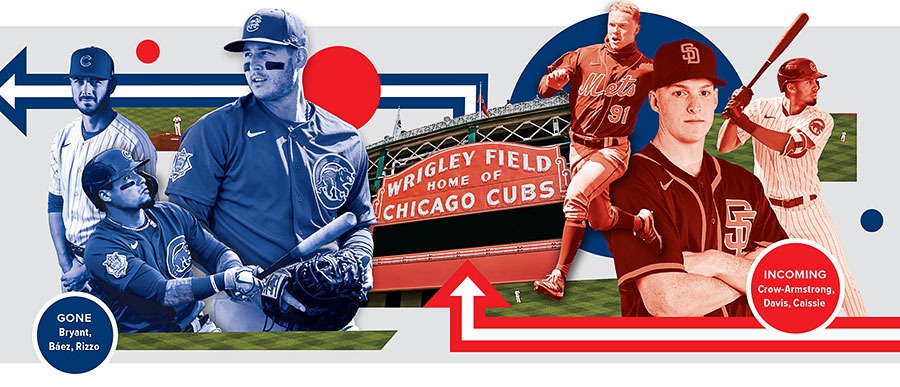How We Got Here
No one dares speak the word “rebuild” in the Cubs’ front office at Clark and Addison. Former team president Theo Epstein and his trusty GM, Jed Hoyer, overhauled the roster from 2012 to 2014, and it was a dark time. The team lost 286 games over those three seasons. Fans put up with the misery because Epstein promised a World Series title and a consistent winner, two things they’d been craving since Teddy Roosevelt was president.
Epstein delivered the championship, of course, but the consistent winner part was more elusive. The Cubs missed the playoffs in 2019, and the 2020 division title was a short-season fluke. Realizing something was broken, Epstein walked away and handed Hoyer the keys to the car — which, yes, was in need of a new engine.
The Fire Sale
The beloved core of the Cubs 2016 championship team got old and expensive fast, leaving the Cubs’ front office in a tough position. Hoyer decided to just rip the bandage right off. Complaining of “biblical” losses resulting from the pandemic-shortened 2020 season, Cubs owner Tom Ricketts ordered Hoyer to cut payroll. With the Cubs going nowhere, he traded nearly everyone. Pitcher Yu Darvish was the first to go, with Anthony Rizzo, Kris Bryant, and Javier Báez soon to follow.
The Kids
The return for these stars was young, talented, and risky. Outfielder Kevin Alcantara is a huge man who could hit 30 home runs a year. Alexander Canario is a compact outfielder who takes Báez’s approach at the plate — swing hard at everything and see what happens. Pete Crow-Armstrong could be the speedy leadoff hitter and defensive center fielder the Cubs have been missing since forever. Infielder Reginald Preciado is a switch hitter who could hit for either high average or power as he matures. Owen Caissie is a big left-handed outfielder with a patient plate approach, but when he swings and connects, he sends the ball a long way. All five look at least two or three years away from the majors.
At 24, right-hander Caleb Kilian, another trade pickup, is older than that crew. He’s a potential midrotation starter who issues very few walks. Outfielder Brennen Davis, the Cubs’ top prospect even before these trades, is the rare player who does everything well. Both could see Wrigley this season.
All in all, the Cubs could have a great team in 2025, if things break right.
The Vets
If the Cubs were just rebuilding, signing veteran pitcher Marcus Stroman to a three-year deal would make little sense. Hoyer also grabbed lefty Wade Miley. Now the woeful pitching rotation suddenly looks … decent. Before the postseason lockout, word was the Cubs were pursuing more free agents.
The Outlook
We don’t know what baseball will look like post-lockout. The owners want expanded playoffs and are likely to get them. That could mean four wild card teams in each league. Hoyer appears to be building a long-term winner while still fielding a Cubs team that is competitive for an expanded playoff spot even now. Which should keep the seats at Wrigley full and the TV ratings high enough to see strong revenue flow in.
But Hoyer could surprise us yet again. Catcher Willson Contreras is a free agent after this season. Hoyer could deal him and others for even more prospects, especially if the team is struggling near the trade deadline. Or he could use the payroll flexibility the earlier deals brought and sign another big free agent.
But one thing is clear: The Cubs think doing nothing is the worst move of all.



